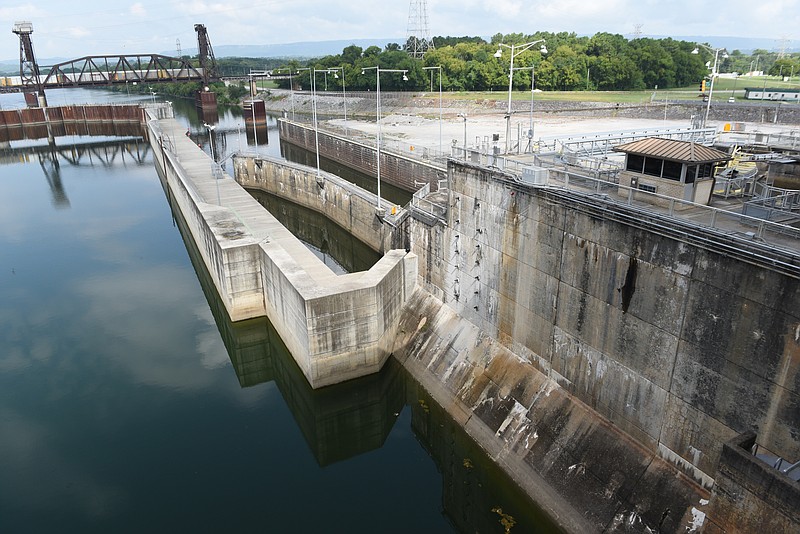U.S. Sen. Lamar Alexander, R-Tenn., is disputing a new economic assessment that weakens the justification for building a new lock at the Chickamauga Dam, claiming the study doesn't tell the full story of the value of the $858 million project.
Alexander, the chairman of the energy and water development appropriations subcommittee that oversees the Army Corps of Engineers, said barge traffic at the existing Chickamauga lock has dropped because the lock isn't as reliable as it once was and is smaller in size than other locks downstream on the Tennessee River.
"Traffic through the lock has been declining the last few years for this obvious reason: the existing lock is outdated, inefficient and unreliable, which is why it urgently needs to be replaced," Alexander said. "Because the Corps' updated economic analysis includes this artificially low lock usage data, it only tells half the story. The Corps should focus on the benefits of finishing the new lock, not second-guessing the work that has already been done."
The Corps presented a study to the Inland Water Users Board on Tuesday that suggested the benefits of the new lock may no longer justify its cost because the price tag for the project has more than doubled while barge use of the lock has dropped in half in the past decade.
Shippers, including Tate & Lyle in Loudon, Tenn., say they switched from river transportation to rail because the current, crumbling Chickamauga lock is often closed for repairs. The Loudon plant brings 2 million tons of corn a year to the riverfront facility and its switch to rail is one of the major reasons for the dropoff in commercial tonnage through the Chickamauga lock in recent years.
The Corps has installed anchors and instrument sensors to strengthen and monitor the existing lock, which was built in 1940 with what ultimately proved to be inferior concrete. A new and bigger lock at the Chickamauga Dam is about 20 percent complete after a decade of design and building work. But the project has been stalled for three years because of a lack of funding for many of the Corps lock and dam projects.
"We need to replace Chickamauga lock before it fails.," Alexander said. "Failure of the lock would throw 150,000 trucks onto I-75 and increase the cost of shipping goods for manufacturers all across the state."

